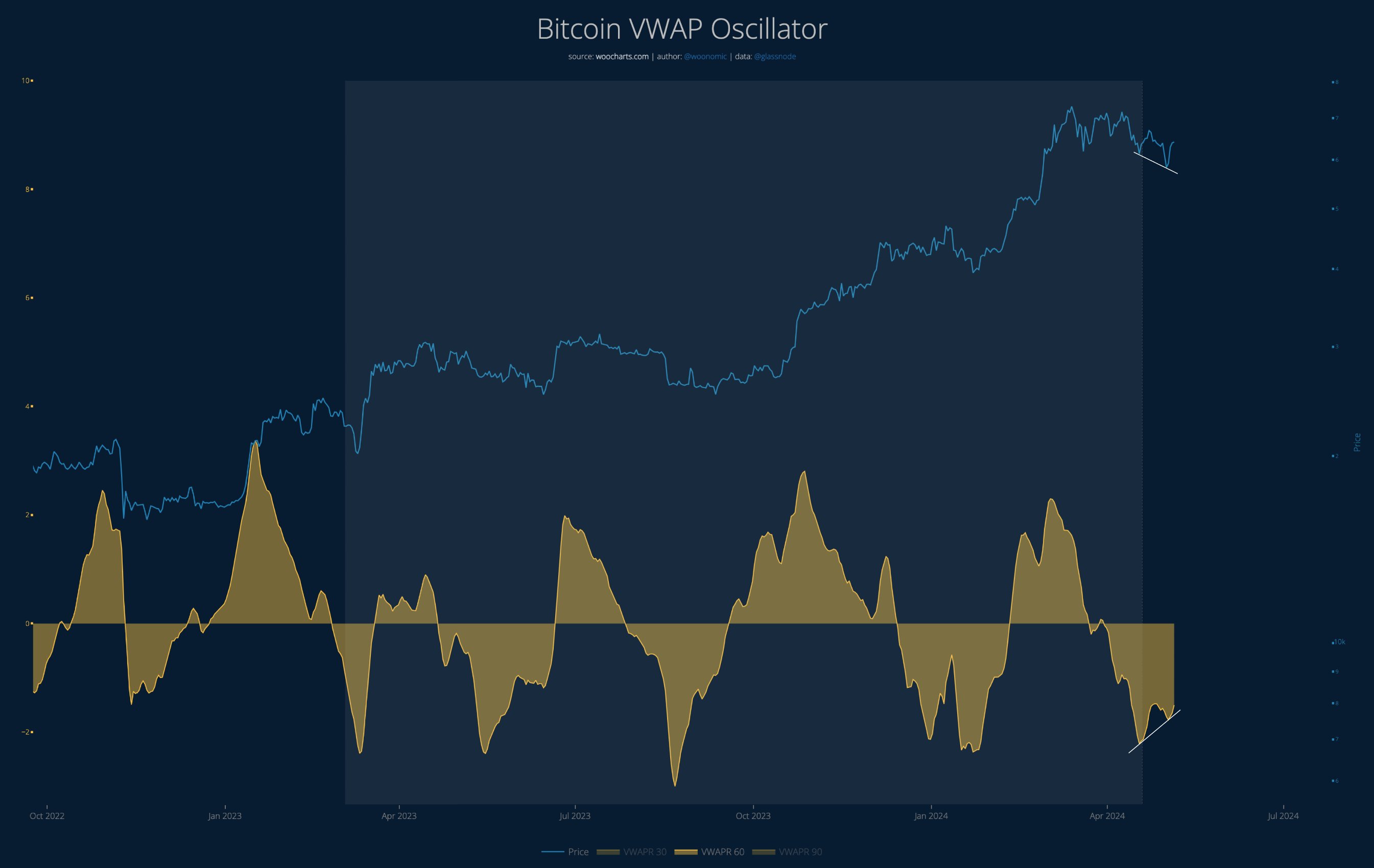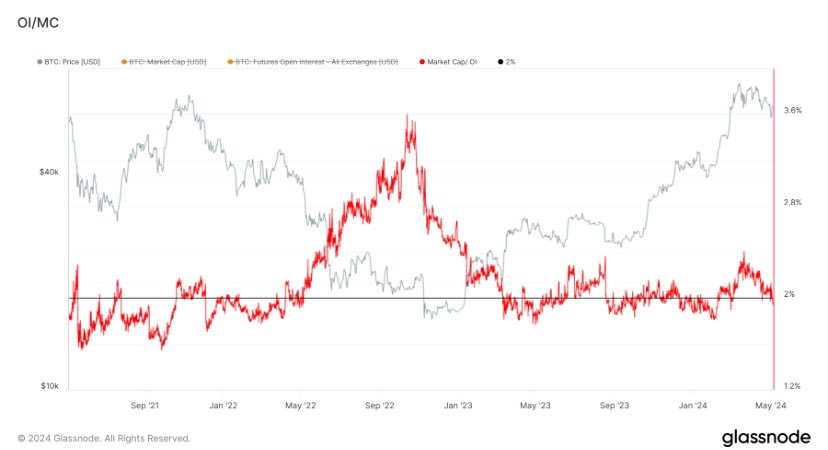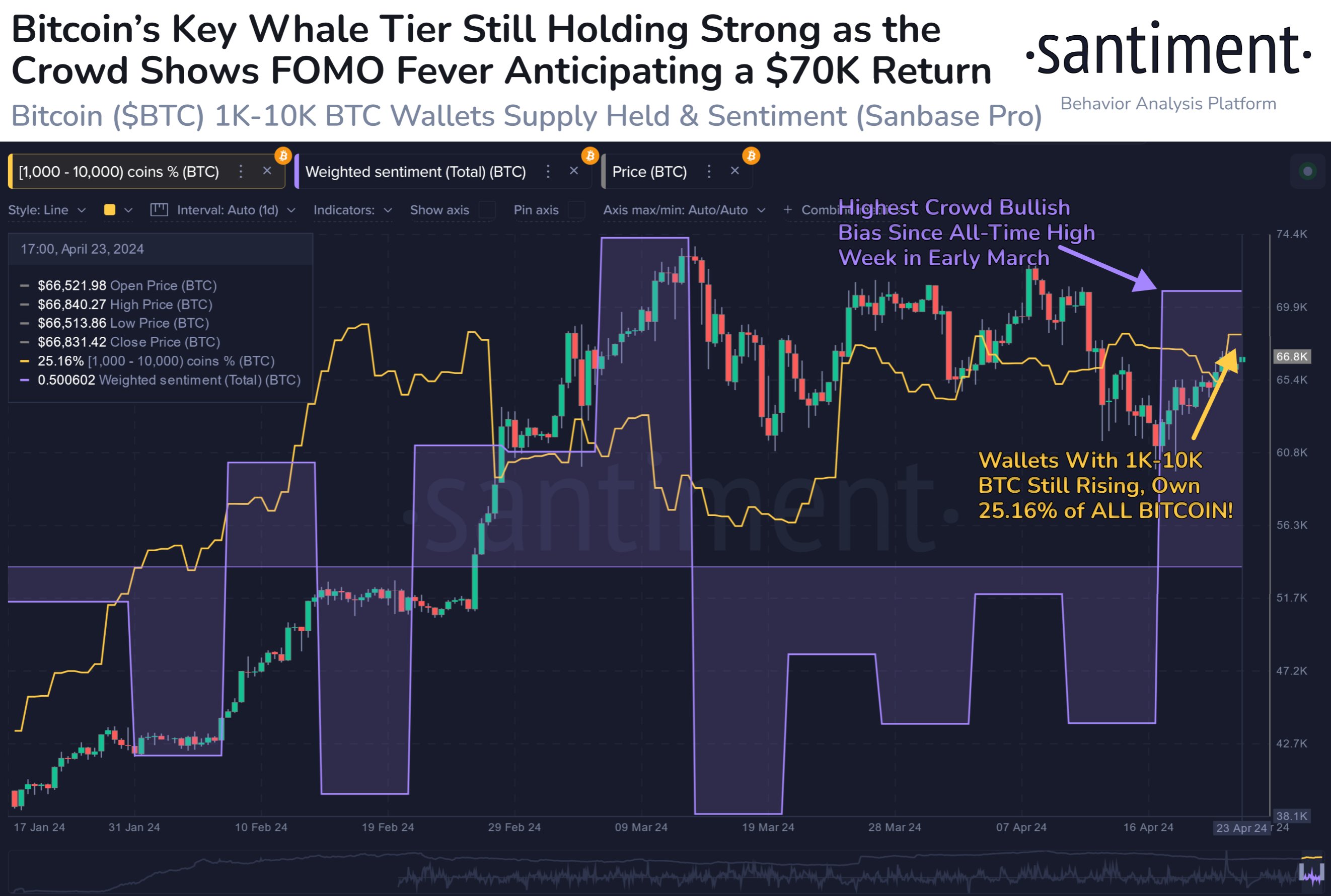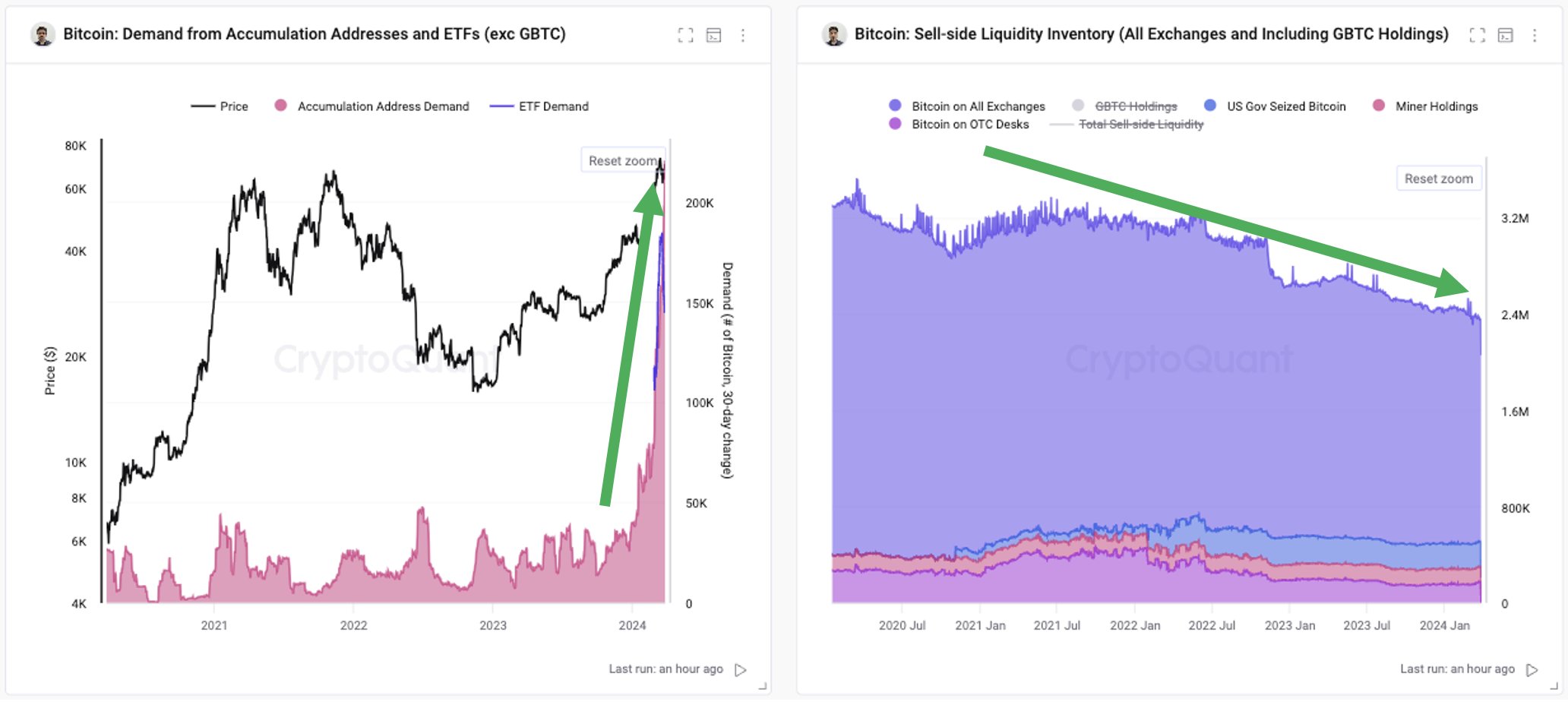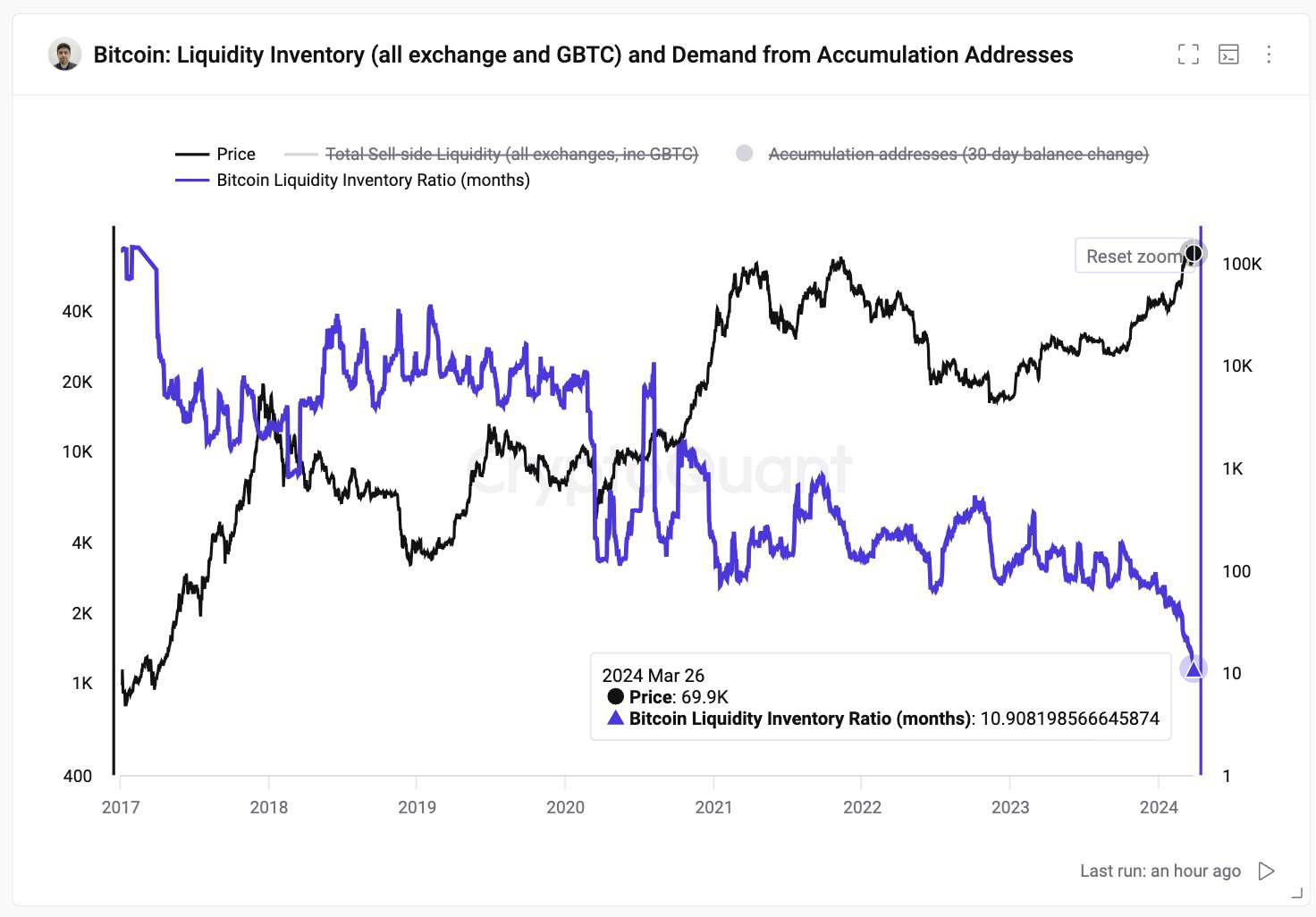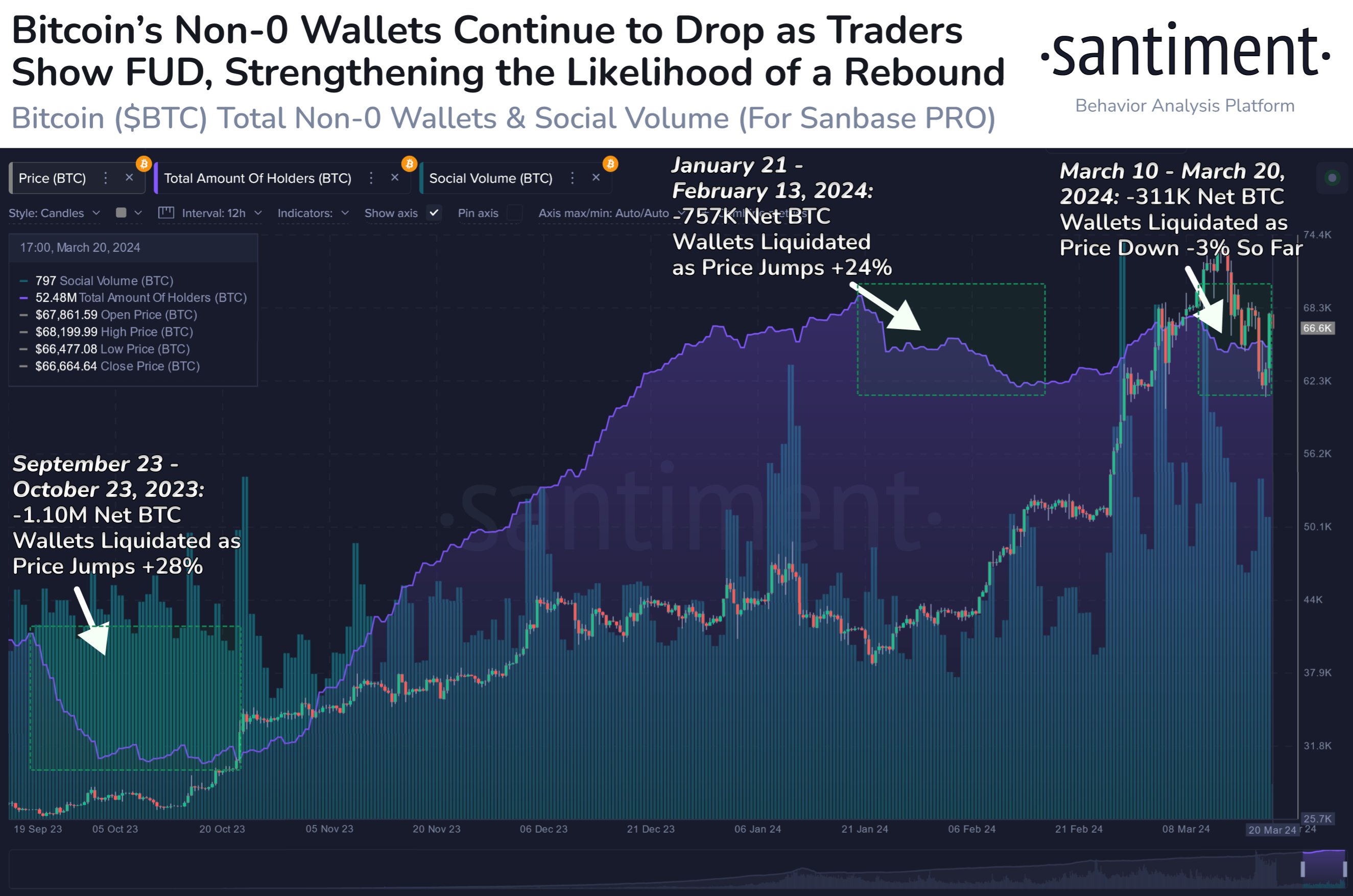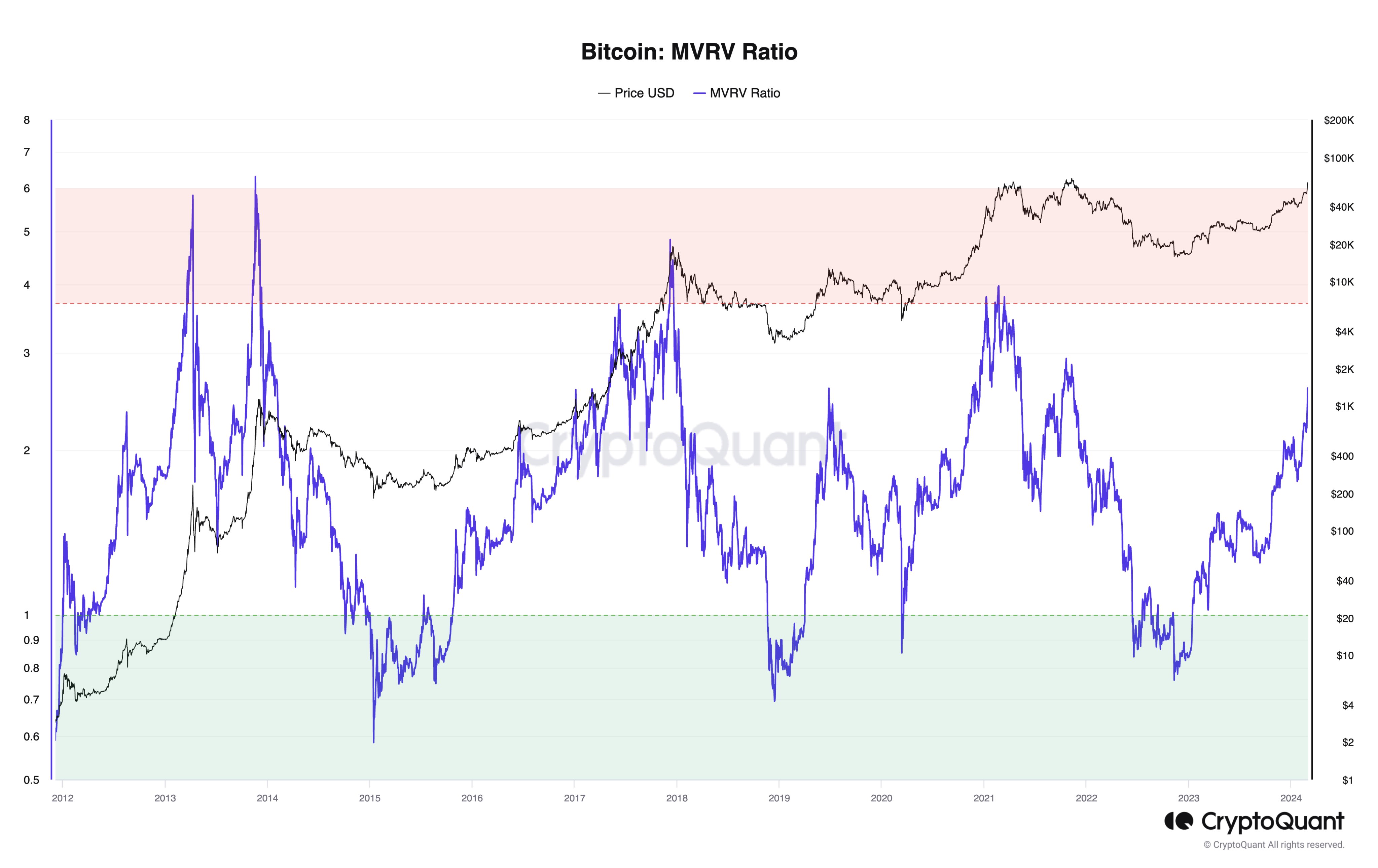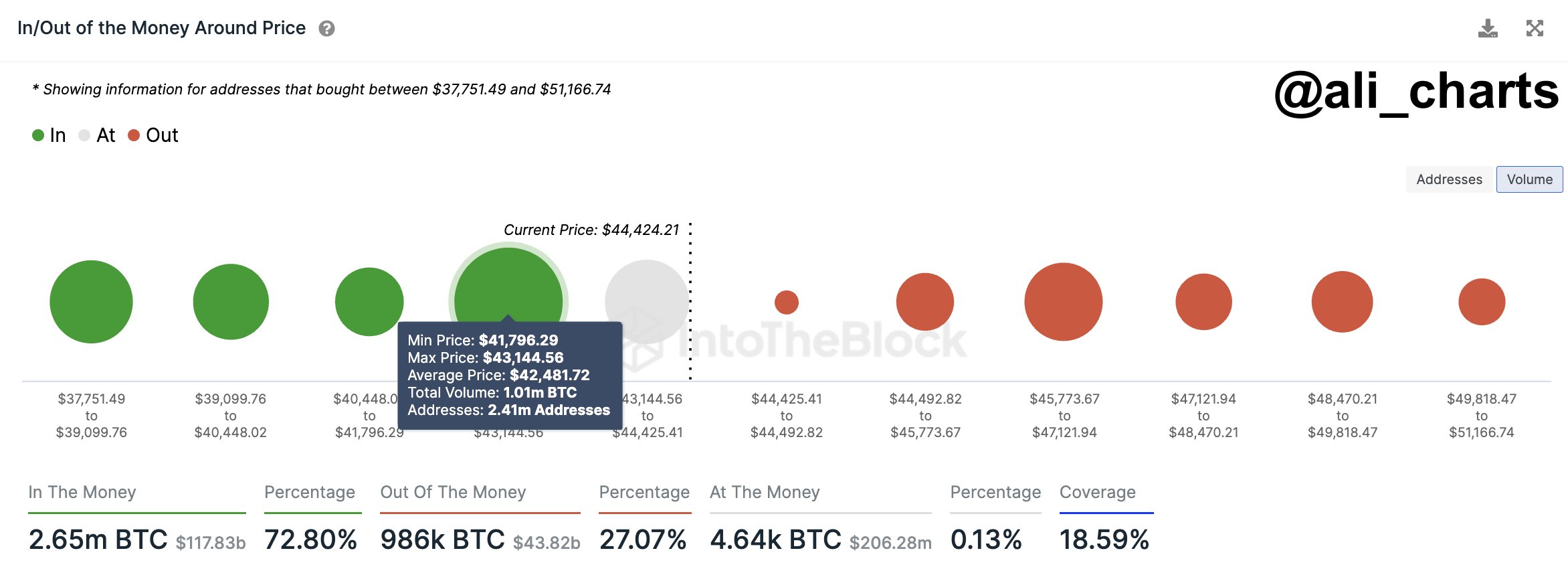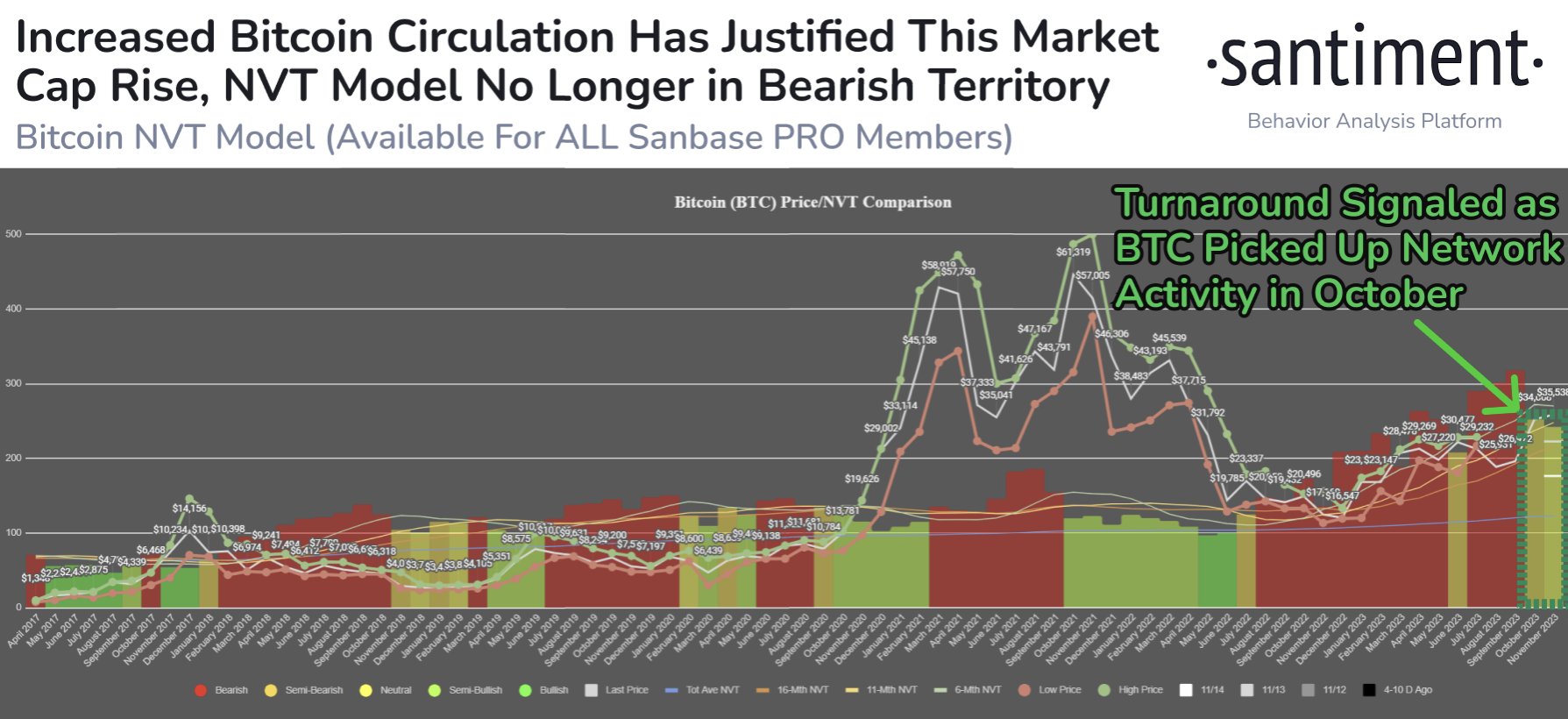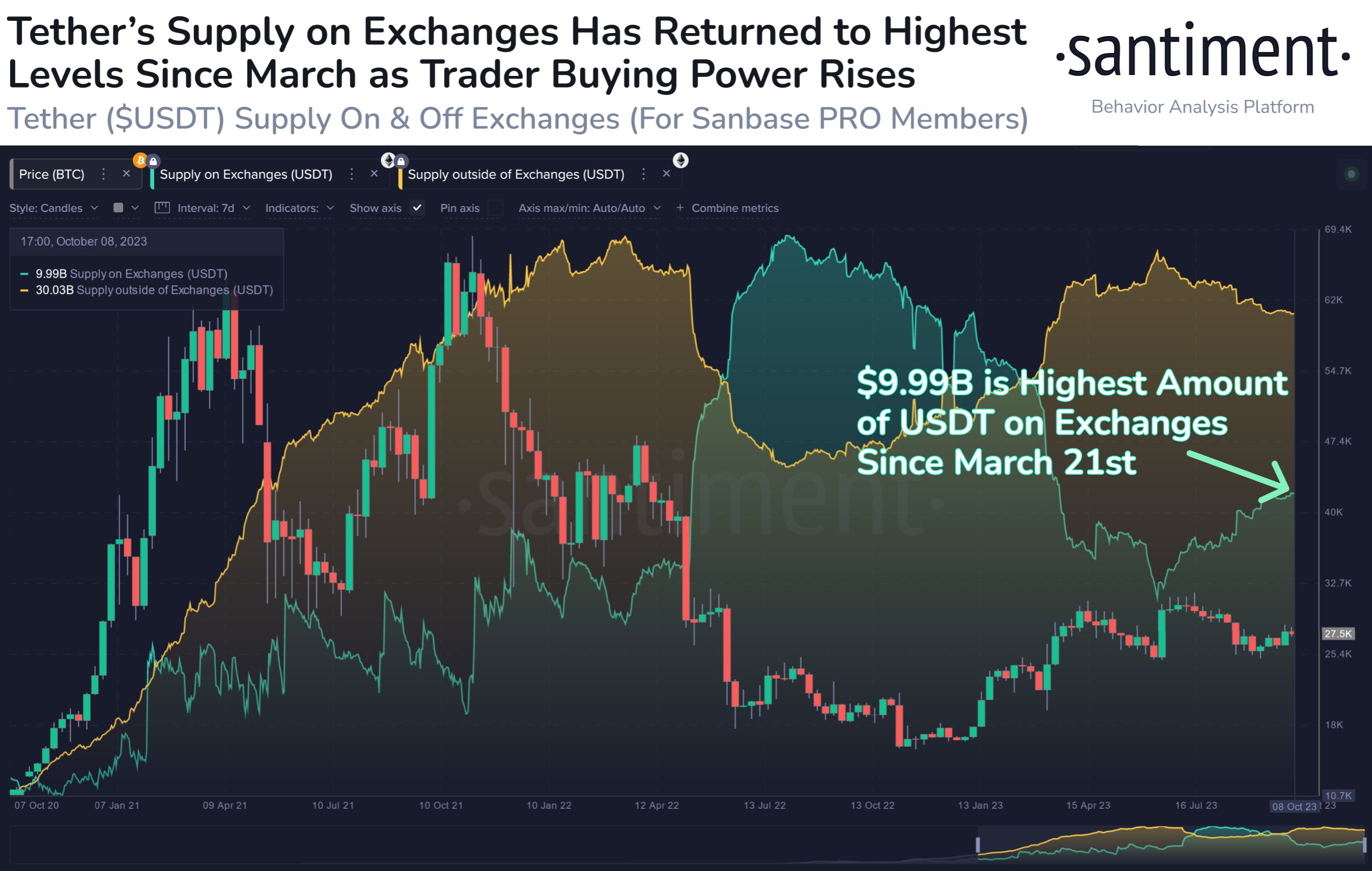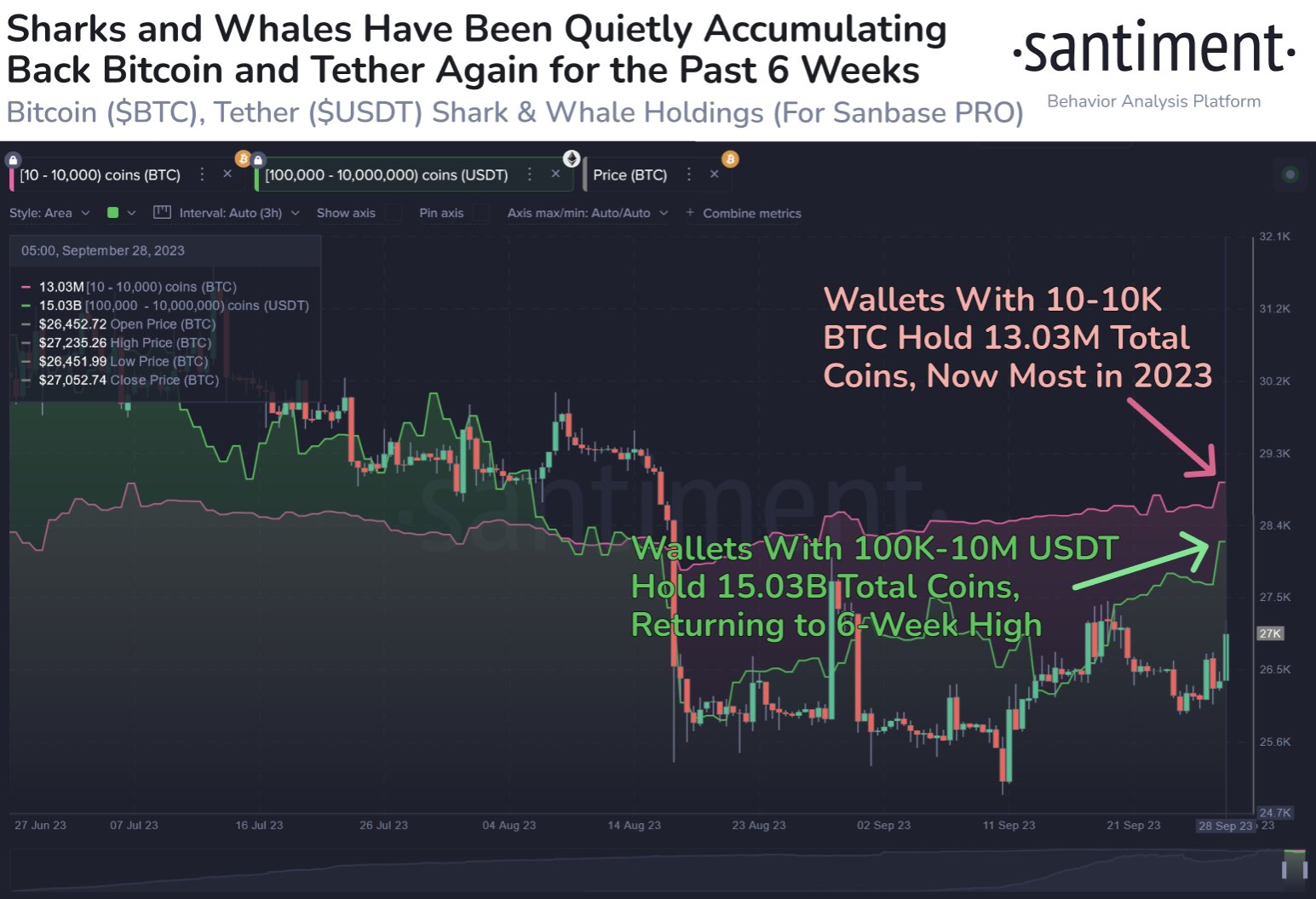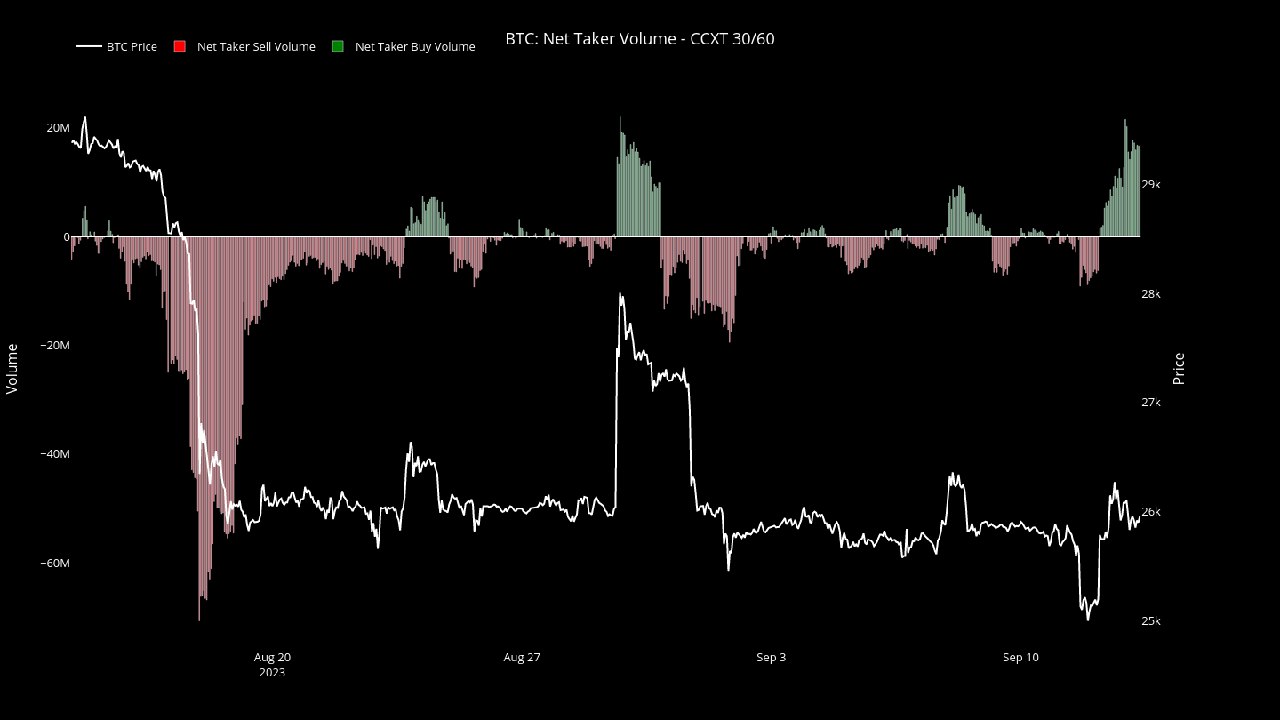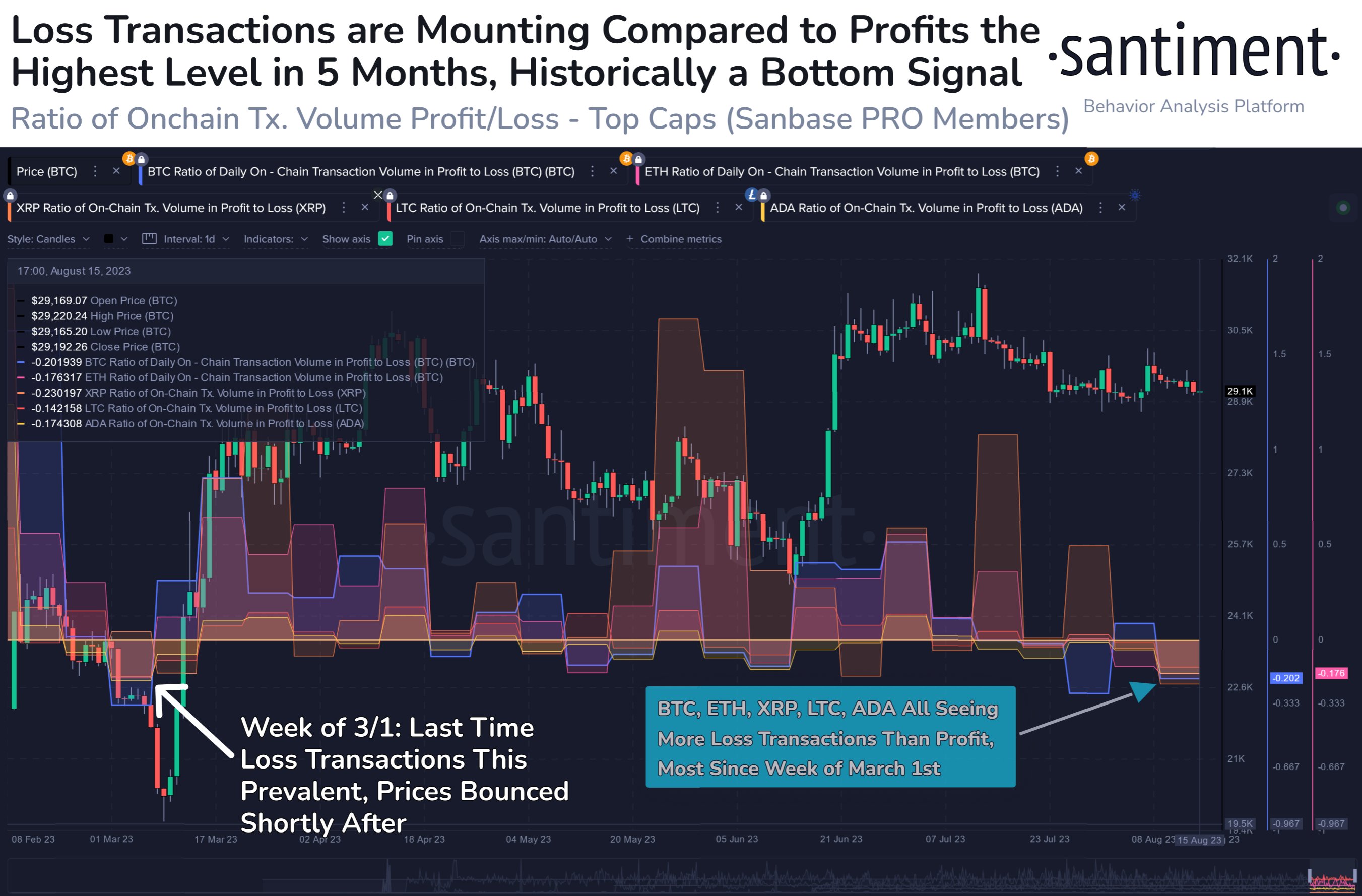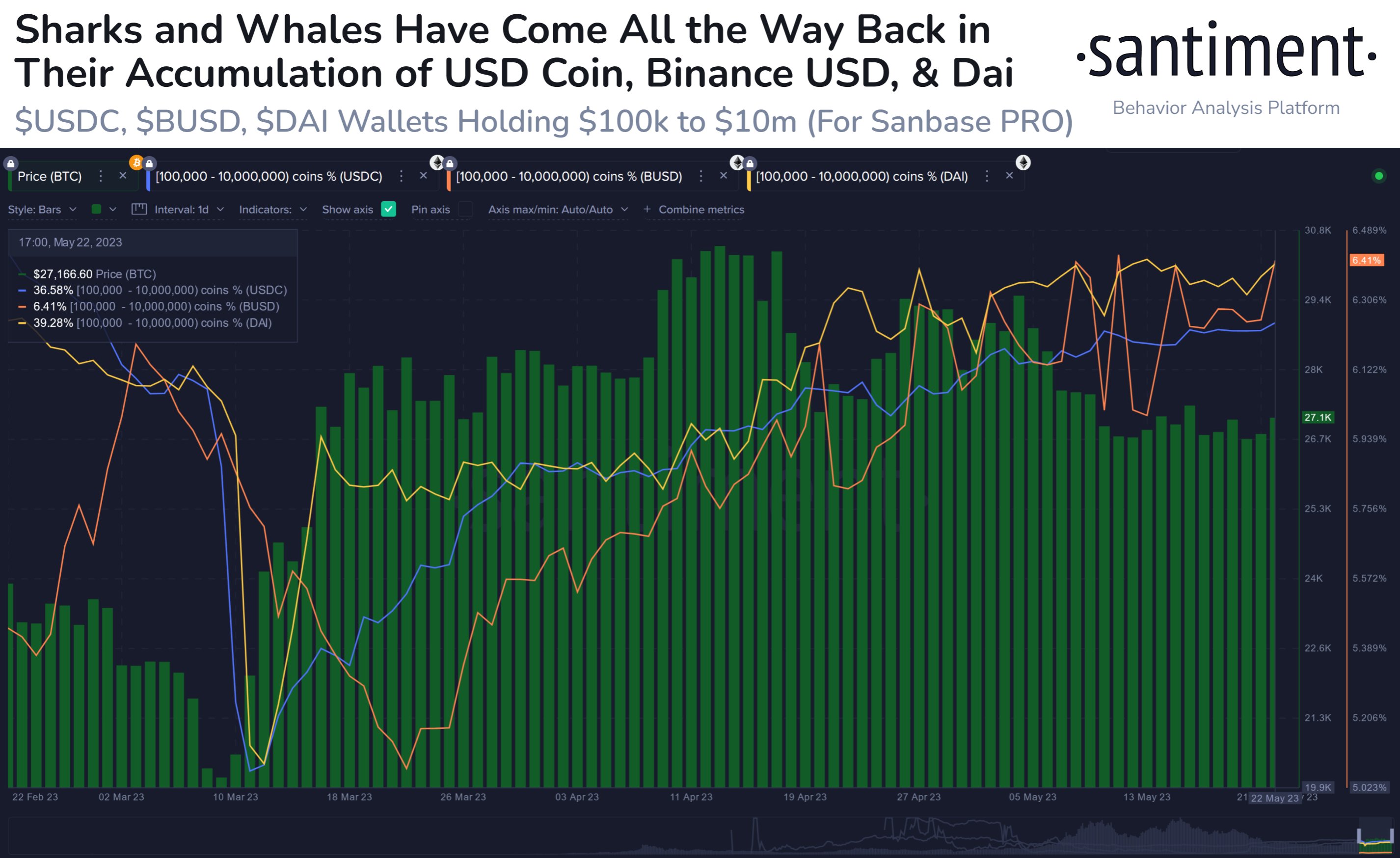An analyst has explained how Bitcoin seems to be showing a good setup to reach escape velocity based on the trend in this indicator.
Bitcoin VWAP Oscillator Has Been Showing A Bullish Divergence
As explained by analyst Willy Woo in a new post on X, a bullish divergence has appeared to be forming in the Volume-Weighted Average Price (VWAP) oscillator of the cryptocurrency.
The VWAP is an indicator that calculates an average price for any given asset, taking into account not only the price but also the volume. More formally, it’s calculated as the cumulative price sum multiplied by the volume divided by the cumulative volume.
This metric puts a higher weight on the price at which more volume is traded. Usually, the exchange-reported volume is used to find the metric, but for a cryptocurrency like Bitcoin, the entire transaction history is visible to the public thanks to blockchain data. Woo has used on-chain volume instead to calculate the VWAP for BTC.
The VWAP oscillator, the actual indicator of interest here, is a ratio between the asset’s spot price and VWAP. Here is the chart shared by the analyst that shows the trend in this metric over the past couple of years:
As displayed in the above graph, the Bitcoin VWAP oscillator has been in the negative territory for the past month but has recently shown a turnaround.
Although the metric is heading up, it’s still very much contained inside the red zone. At the same time as this rise, the cryptocurrency’s price has been heading down instead.
According to Woo, this is a bullish divergence forming for the asset and it’s also one that has a “lot of room to run,” since tops in the coin have generally occurred when the oscillator has reached a point of reversal at relatively high levels inside the positive zone, which should still be quite far away.
“Seems like a good setup for BTC to reach escape velocity,” notes the analyst. It remains to be seen whether the bullish divergence will end up bearing fruits for the asset.
In some other news, the Bitcoin whales (investors carrying 1,000 BTC or more) participated in buying around the recent lows of the asset. Still, market intelligence platform IntoTheBlock has revealed that the accumulation sprees from these large investors have been displaying an overall downtrend.
From the chart, it’s visible that the Bitcoin whales have been buying at each of the dips in the last few months, but it’s also visible that the scale of this buying has been diminishing with each one.
This could be a sign that the appetite for buying among these investors, although still present, is getting smaller with each dip.
BTC Price
When writing, Bitcoin is trading at around $63,500, up over 1% in the last seven days.
